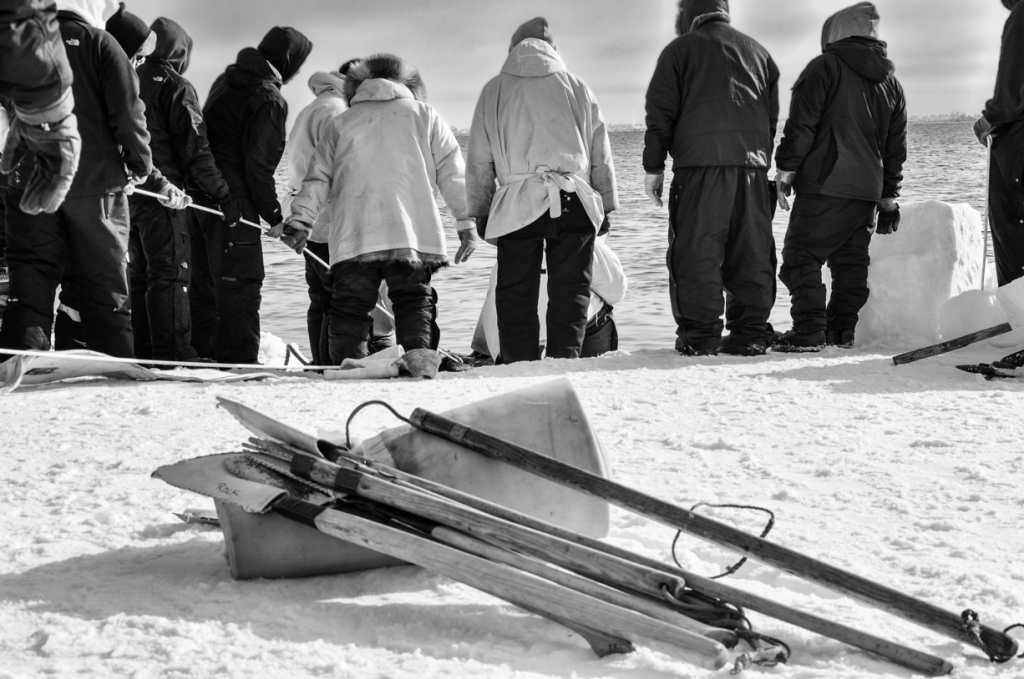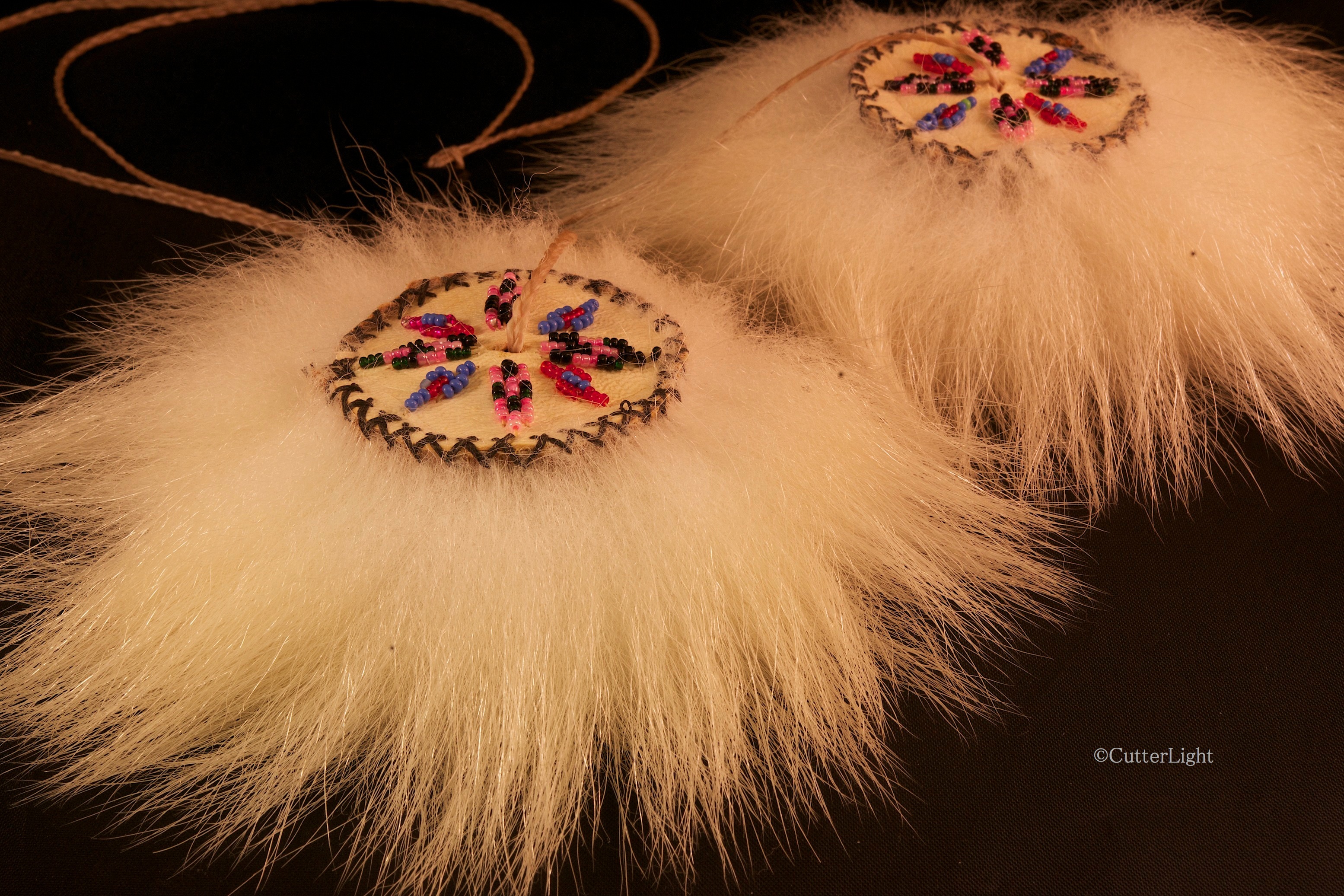
Tag Archives: tradition
Umiak Artist

Anticipation

Barbra and I hiked from the Arctic village of Point Hope about three miles across the frozen Chukchi Sea to where a Bowhead Whale had been caught. These Inupiat crews still use handmade wood-framed boats fitted with seal skin hulls. Here the crew is preparing to bring the whale up onto the ice. It is cold, difficult work; that day a man lost part of his finger setting up the block-and-tackle. But it is joyous, too, as the meat and blubber is distributed throughout the village. After taking this picture, I handed the camera to Barbra and added my shoulder to the tow rope.
I have recently (mostly) completed curating over a decade’s worth of photographs taken during the years we lived in the Alaska Bush – villages not accessible by road. Keep watching this site for a new photograph each day. Your comments are appreciated. JD
Inupiat (Eskimo) Yo-Yo with Polar Bear Fur
Fashioned from polar bear fur and finished with intricate beading, this Inupiat yo-yo has transcended it’s traditional purpose to become art. Based on a bola design, in olden times tools like this were made of rocks tethered together with sinew and were used to catch birds.
Beautifully crafted by Molly Oktollik, one of the elders here in the village of Point Hope, Alaska, this Inupiat “yo-yo” isn’t what most of us envision when we hear the word yo-yo. In former times, they were made of rocks held fast on sinew tethers and in the right hands were a formidable tool for catching birds. Ptarmigan, for one species, are often easy to get close to, and ducks and sea birds returning to their headland roosts typically fly in on a low trajectory.
These days yo-yos are crafted as pieces of art, or, when less elaborate, as toys. It takes a certain skill, but the two ends can be made to rotate in opposite directions – that is, with one end revolving around the center handle clockwise, and the other revolving counterclockwise. It’s a pretty cool trick if you can get it to work.

